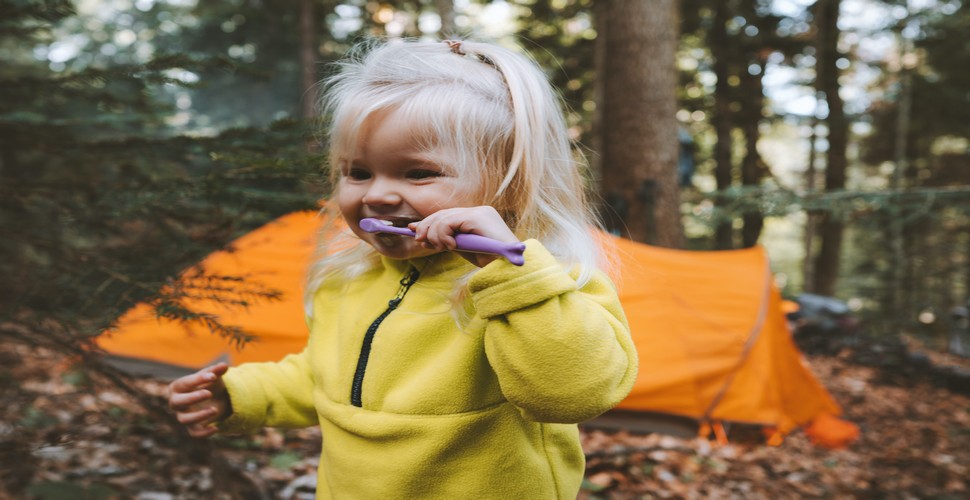

Claire Dean
Travel in South America is a joy to behold. The rich variety of destinations, experiences, landscapes and geography fascinated me so much, that I chose to relocate here, over 20 years ago! The best thing I ever did! Allow me to share my knowledge and passion for Central and South America with you and help you plan your holiday of a lifetime!

Trekking with young children
Written by:Claire Dean
Last Update: 2025-02-11
Here are some things to bear in mind when trekking with children in Peru and how to make things run more smoothly. Different children have different attention spans and expectations, at the then of the day you know your child better than anyone else, so let this be the main priority when thinking about hiking with kids.

Trekking with the little ones
Make sure your child is used to being in a baby carrier for long periods
For the comfort of your child and yourself, it is much easier if your child is comfortable and relaxed sitting in the carrier. Some children are more active than others, but most will usually want a break every hour or so, making the trekking times longer than usual. Regular breaks, however, will make life easier for everyone on the trek! You can practice before you leave home, with extended times in the baby carrier, going to the store, the park or down the street for example, so they get used to being in the carrier for longer periods of time.

Comfy baby carrier
Are your kids used to camping?
This is important, as sleeping in a tent in often sub-zero temperatures can affect the hardiest of adults as well as the little ones! Camping is usually basic, cold, restricted and often, limited for facilities. Try and camp at decent campsites with at least the basic facilities. Make sure you have adequate sleeping bags and space in the tent make sure that your kids have practised going to to the “eco bathroom” or more specifically out in the open, some children, as well as adults, can find this a challenge!

Getting used to the tent!
If you are trekking at high elevations, allow adequate acclimatization periods before the trek
It is hard to know how your child will adapt to high elevations unless of course, you live there! Personally, I would allow twice the recommended acclimatization time recommended for the little ones. This will give them time to adjust or time to recover should they become sick during the acclimatization. The general rule of thumb is “the longer, the better” when it comes to acclimatization.

Prepare for the worst
How will YOU react in an emergency situation?
This is super important when asking should you trek with small children. Plan certain situations in your head prior to travel… if my child runs a temperature or breaks a leg, how will I deal with this? Of course, we are hoping that nothing like this would happen, and it’s important to point out that it rarely does happen; however, it COULD happen. If it does, how will you deal with it? Checking out the nearest emergency facilities, carrying an adequate first aid kit, being trained in basic first aid will all help you prepare for the worst-case scenario, it is always better to be prepared for the worst when children are involved, rather than being caught off guard.

First camping trip
Make sure your children, as well as yourselves, have the correct equipment
Take the appropriate equipment and clothing for the weather conditions, warm, waterproof jackets, decent hiking boots, sun hats and sunblock, Band-Aids antiseptic creams, plenty of water, adequate changes of clothes.

Trekkers for the little ones
Go with a guide
An experienced guide, used to trekking with children, from a reputable trekking company will be a lifesaver. Unless you are a super experienced trekker and or know the route you plan to do, go with a guide. They will have a better idea about the route, the terrain, emergency protocols, weather, camping facilities basic illnesses and sickness treatment, local contacts in case of emergencies etc.

Encouraging them to walk
Who will carry the kid?
If your little one is small, then carrying a child will be relatively easy. If your child is a toddler, then they can get quite heavy after being carried for a few Km and especially if you are trekking at altitude! As well as an adequate baby carrier, please consider a porter or Sherpa to help you with the carrying responsibilities, to give yourself a break, every now and again, at least!

Baby carrier
Always do a trial trek at home
A great way to see if everyone is going to be up for a few days trekking in a remote location is to do a few days’ treks at home first. One day do it with what you expect to carry, including the child, to see how everyone copes. It will give you great insight into how a multi-day trek will be for everyone involved!

Trial camp!
Involve your children
It will be much easier for children if they are included and involved in the trek. Point out beautiful sites, stunning lagoons, even a fluffy alpaca or a condor flying overhead and include your children in the experience. Happy children are really good hikers, point out interesting sites and stories to keep them occupied! Choosing a really interesting route will help the cause!

Which way?
Give the children responsibilities and set boundaries
If they are old enough, give them the camera, the compass or map so that they feel like they are useful and helping on the experience. They can gather the kindling for the fire at the campsite, collect water etc. all these things will help them feel part of the whole experience. Children also love a challenge, so set them targets such as to reach the summit or the “tree on the hill” and have an adequate reward when then do so! (chocolate or cookies spring to mind)! On that note….

Tooth brushing
Take plenty of snacks
If the kids are of a walking age then ‘friendly fodder’ is important, sugary snacks, chocolate and cookies are a great incentive and they will burn off the calories while hiking. Do however try and keep it balanced, fresh fruit, dry fruit, nuts, cereals, trail mix and energy bars are all great snacks when trekking. Most important of all though is water, juices and more water. A hydrated kid is usually a happy one!

Snack time!
Repeat
If you don’t use it, you lose it! Try and get the little ones hiking as much as you can, the more they get used to trekking, the easier it will be each time. Practice makes perfect is the old adage and every time they do it, they will absorb and learn something new. Instil in them that hiking is amazing and fun and who knows, when they are bigger they may even invite you along too!






